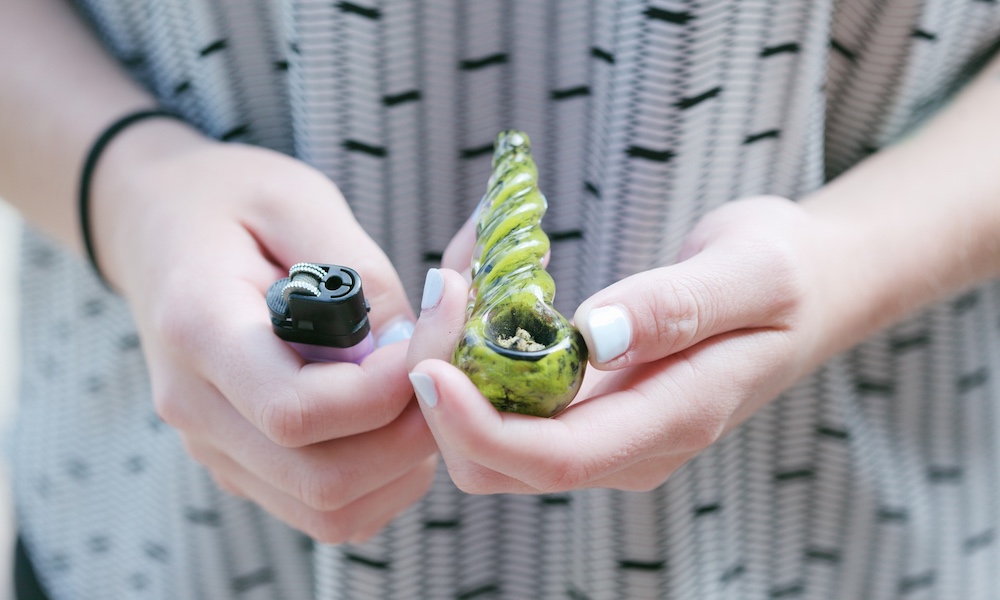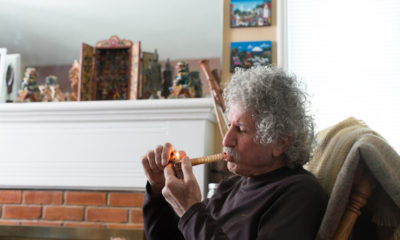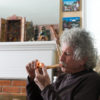
Culture
Study: Young Adults Living Near Dispensaries With Ads Consume More Cannabis
The way the study defines “young” is likely to cause confusion. Plus, the findings directly contradict another study out this June.
A new report from RAND says young adults who live near dispensaries use marijuana more than their peers and have a more positive view of the drug.
According to the research led by Regina Shih, director of RAND’s Social and Behavioral Policy Program, and a senior behavioral and social scientist at the corporation, people aged 18 to 22 were most likely to consume cannabis if they lived near dispensaries that also had storefront signs.
The authors suggested that their results showed that governments could regulate that kind of dispensary signage as one strategy for dropping marijuana use rates in the young adult demographic.
This research is the first to show that storefront marijuana signage is a major factor in the associations between the higher density of dispensaries, greater use of marijuana and positive views about the drug, RAND says.
However, the study also directly contradicts another one published this June in the Substance Abuse and Misuse journal, which found that living near dispensaries actually had no correlation with young adults using cannabis.
The RAND research was conducted on a group of 1,887 young adults in Los Angeles County surveyed online from 2016 to 2017. The things the researchers were looking for included past month marijuana use, especially stats on frequency like days used and how many times. Other data points collected included whether or not the young people expected positive results from cannabis and how they perceived their peers’ use.
The study then matched the responses with the participants’ home locations and the number of dispensaries available to them locally within 4 miles of their homes.
RAND found that nearly 85% of the young adults participating in the study had “10 or more dispensaries within 4 miles of their home.”
The researchers adjusted the results to account for “individual-level sociodemographic characteristics and neighborhood socioeconomic status” and found that the data “indicated that living near a higher number of [dispensaries] was associated with a greater number of days used in the past month.”
Furthermore, results showed living near dispensaries with storefront signage “had a four-to-six-fold larger effect on the number of times used per day and positive expectancies, respectively, compared with associations with the total [medical marijuana dispensary] count.” So, the signage is likely proving a bigger issue than the dispensaries themselves.
“Our findings suggest that as the marijuana retail outlets become more visible and more numerous, they may influence the way that young adults perceive and use marijuana,” said Shih in an announcement on the study. “Attention is needed on access to marijuana for young adults, as marijuana use is most prevalent among this age group and is also associated with increased risk for several substance use disorders.”
The Problem With the Study’s Timeline & Age Range
We reached out to Dr. Amanda Reiman to get her take on the new numbers from RAND. Reiman was the point person in California for the Drug Policy Alliance’s participation in the Prop 64 effort to get cannabis legalized in the Golden State and now works as the Vice President of Community Relations for Flow Kana.
“In my opinion, the biggest flaw with the study had to do with the time period they chose,” Reiman told Cannabis Now in an email. “2016-2017 saw a huge change in how dispensaries were accessed. Those under 21 needed to still have a [medical recommendation] card to get in [to dispensaries], availability on the illicit market shifted, legalization reduced the stigma and increased store participation and willingness to admit [use]… and the changes in regulation led to all kinds of sales and product dumping at low prices that was a brief (but glorious) point in time.”
Reiman thinks the researchers could have been a little more careful in their approach.
“The researchers should know better and what they really should say is that ‘the transition period from a medical to adult-use market in Los Angeles was associated with higher dispensary participation by young adults.’ And isn’t that what we want? For those who choose to use cannabis to buy it from regulated stores and not from the street? I mean, isn’t that the point?” she said.
And the choice of timeline can have serious ramifications on the results. In fact, the aforementioned study published in the Substance Abuse and Misuse journal looked at people ages 18 to 26 in Los Angeles from the years 2014 to 2015. They found no relationship between living near dispensaries and using cannabis more.
Choosing an age group of 18 to 22 is also fraught, given that recreational use of cannabis for those over 21 was legalized in California in November of 2016, but people 18 and older have been able to receive a medical marijuana recommendation since Prop. 215 passed in 1996.
Reiman also noted that the RAND study did not look at those under 18, who would only be able to access medical marijuana with permission from a parental guardian and a doctor. Given this age range, Reiman noted that “their conclusions are actually pretty underwhelming.”
Not long after the RAND research dropped, Oxford Treatment released their new study from SAMHSA’s national drug use survey to map out youth marijuana use within the last reported year (2017), along with the year-over-year change in use in each state.
The most recent reported data showed teens in Vermont (17.9%), Colorado (17%), Oregon (17%), Alaska (16.5%), and Montana (15.9%) had the highest marijuana use in the country.
California was a bit behind the leaders, with only 13.3% of children 17 and under reporting to have used marijuana in the last year. California was essentially tied in youth use rates with Indiana, where if caught with less than an ounce, you can face up to 180 days in jail.
TELL US, do you think dispensaries should be able to advertise?






















